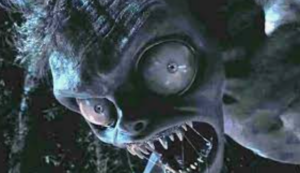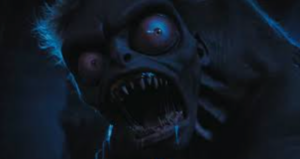Tim Burton’s Addams Family spinoff, Wednesday is punctuated with elements of comic amusement as well as horror given the presence of monsters such as the Hyde, and monster-like figures such as Joseph Crackstone, the dead pilgrim who becomes undead. Noël Carrol talks about how the presence of monsters and their “grotesque” and “unexpected” nature becomes evocative of both horror and comedy.[1] Horror and comedy are intertwined, and serve similar functions as one represses emotion and the other releases it. Throughout Wednesday, moments of emotional turmoil are balanced with upcoming scenes of comedic enjoyment, allowing for a catharsis of sorts. One such instance of comedic amusement can be evinced in the “incongruity” between Wednesday and her roommate, Enid’s character.[2] While Wednesday represents everything black and dark from her clothes to her restricted facial expressions, Enid is the epitome of brightness, colour and all things cheerful. This contrast in their character traits and appearances is amusing and the bringing together of such “contrasting ideas or concepts,” represents the series attempt to infuse a layer of comedic humour into an otherwise dark Tim Burtonesque landscape. In attempting to balance both colour and darkness, as well as humour and horror, Wednesday represents both the grotesqueness in horror and the comical contradictions in character and plot structure. To explain the horror element further, in Wednesday, the character of the Hyde creates “emotional responses of fear and disgust” in the audience.[3] The creature’s presence is unexpected, as is any knowledge about who is responsible for him. Such uncertainty and lack of knowledge coupled with the disgust the creature elicits, builds stronger feelings of fear and tension in the audience. While incongruities make certain things appear ironic and comedic, horror works to consume the audience with an overflow of emotion. This overflow is reduced and lost, as each episode morphs from one horror scene to another scene of amusement. The spectator is left both intrinsically involved as well as detached from the happenings onscreen.


[1] Noel Carroll, ‘Horror and humour’, The Journal of Aesthetics and Art Criticism, 57:2, 1999, p. 146
[2] Ibid, p.152 -153
[3] Ibid, p.150